A city’s proximity to natural resources is no longer the driver of its competitive advantage. Instead, a city’s ability to attract, develop and retain talent (the people who live and work there) is the greatest predictor of social and economic prosperity.
— Calgary on the Precipice, pg 5
Calgary’s New Economic Strategy
In June 2018, Calgary City Council unanimously approved a new economic strategy for the city, facilitated by Calgary Economic Development. The fruit of that decision-making process was the report entitled, Calgary in the New Economy.
Why are our leaders getting together to talk about Calgary’s ‘New Economy’?
First, the lockdown of our oil and gas industry here in Alberta has given the City of Calgary great pause. Moreover, the emergence of COVID-19 has created chaos across the world, particularly in areas of brick and mortar retail. Indeed, COVID-19 has been an economic as well as viral pandemic.
Mary Moran, President of Calgary Economic Development, and Sandip Lalli, President of the Calgary Chamber of Commerce, responded in an op-ed in the Globe and Mail in April 2020 that “Going back to the way things were pre-pandemic is no longer an option.”
In the Globe and Mail op-ed, Moran and Lalli concluded that,
“long term recovery and a future with opportunities for our children will depend on the creativity, grit, and determination of entrepreneurial Calgarians and the innovative thinkers in our economy.”
Going back is no longer an option…
The question is, how do you prepare Calgarians to face the disruptions, the changes and complexities of post-pandemic life?
Massive Change and Complexity
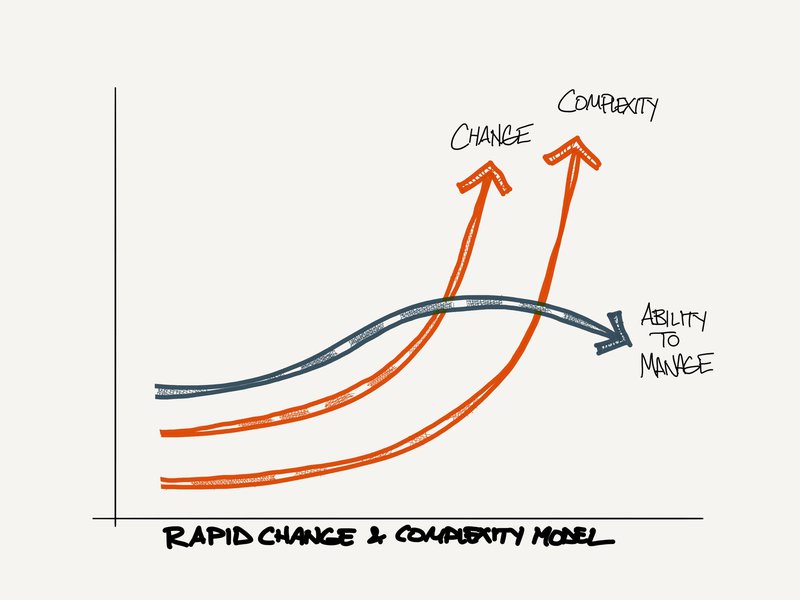
Take a look at the model above…
Does it not describe the times we’re living in?
You have two dramatic trajectories: change, or what Bruce Mau calls ‘Massive Change’, and complexity. Moreover, change and complexity are emerging at orders of magnitude compared to previous centuries.
But look at the third line—our ability to manage: it’s on a downward trajectory. More and more we find ourselves on the wrong side of change and complexity.
What we’re living through right now is a ‘crisis of crises’ (Senge) fuelled by COVID-19—every facet and aspect of our society has been impacted.
So how do we manage this crisis of crises?
According to the Calgary Economic Strategy, rapid change and complexity are placing a premium on adaptability.
“Adaptive capacity is the ability for an individual or institution to anticipate systematic changes and proactively reconfigure existing resources, or acquire new resources, to maintain a competitive advantage.”
—Calgary at the Precipice, 12
Learning is the New Calgary
To be on the right side of change and complexity is to be adaptable. Adaptability, according to Calgary on the Precipice (a white paper I will describe in more detail below), “can be proactive and intentional, characterized by anticipating change and planning our response in advance.”
And that’s where ‘learning’ becomes the primary focus.
The Calgary in the New Economy report is an injunction that the City of Calgary must reinvent itself. This “reinvention” begins by transforming how its citizens learn. And by ‘learning’ the report means to become more adaptable to rapid change, complexity, and systemic disruption.
“Only when every Calgarian possesses a capacity to not only continuously adapt, but to embrace our new reality, will our city and every citizen step back from the precipice and chart a new path to the future.”
Education is the Central Pillar of the New Calgary
The New Economy report calls for Calgary’s economy to be diversified. A central pillar of the development strategy is education. Calgary in the New Economy defines ‘education’ as
“the learning system requirements to prepare Calgarians for the new dynamic economy, [namely the ability to] adapt quickly to emerging opportunities and challenges.”
To further develop this concept of education, Calgary Economic Development established the LearningCITY Project.
Only when every Calgarian possesses a capacity… to embrace our new reality will our city… step back from the precipice and chart a new path…
Calgary as the LearningCITY
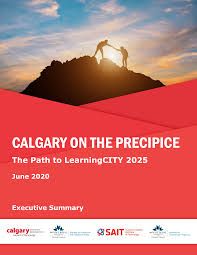
Calgary on the Precipice is a white paper report that outlines the LearningCITY Project. The report is the first outcome of the LearningCITY Project, sponsored by Calgary Economic Development, Mount Royal University, and the Southern Alberta Institute of Technology (SAIT). The report was researched and written by an interdisciplinary project team from Mount Royal University, The University of Calgary, University of Guelph, and the Alberta University of the Arts.
The mandate of the LearningCITY project is to explore how a city-wide learning system could be re-envisioned to deliver on the priorities of the Calgary Economic Strategy.
According to Calgary on the Precipice,
“At the root of adaptation is learning. Therefore, to become a city that adapts is to become a city that learns. Calgary must become a city that learns better and faster than any other city. Therefore, the new design for the City of Calgary is to become a Learning City.” For according to Peter Senge, as cited in the New Economy report, “The ability to learn faster than your competitors may be the only sustainable competitive advantage.”
Who’s Your City?
In a statement that sounds directly from Richard Florida’s Who’s Your City, Calgary Economic Development states,
“Over the past four decades, the competitive advantage of many cities—driven by economic, social and cultural factors, such as advanced technology and globalization—has transitioned from proximity to natural resources, to their ability to attract and mobilize human capital.”
Additionally, the report cites the World Economic Forum’s Future of Jobs Report, which forecasts that by the year 2022, “75 million jobs will be displaced across the leading 20 economies, while 133 million new jobs will be created in nascent sectors.” The Future of Jobs Report is a call for a massive reskilling and upskilling endeavour between 2018 and 2022.
Let’s remind ourselves that we are already in 2021…
The Five Movements of the LearningCITY Strategy
There are, what I call, five movements of Calgary’s Learning City strategy, which are the following:
- Transition to an Open Learning System: The transition to an open learning system is a shift from a closed learning system (such as elementary to secondary school, to post-secondary education to job placement) to “an open, lifelong personalized learning system where people are empowered by and accountable for their own continuous development.”
- Transition to Purpose-Based Learning: A learning city needs a learning system that prioritizes empowerment and autonomy for the learner. The pathway for the learner is customized, not a one-size-fits-all approach.
- Commitment to universal experiential learning: Much of academic learning is conceptual, theoretical. Calgary wants to become the first city in North America to adopt a universal experiential learning system that incorporates a minimum of 450 experiential learning hours for undergraduates prior to graduation.
- Develop enabling competencies: Enabling capacities are those that cross-pollinate into other areas such as communications or citizenship as opposed to welder or cook. “This approach will transcend industries, roles, and professions, creating a unique competitive advantage for our city.”
- Invest in City-Level Structural Capital: A learning ecosystem across the City of Calgary will require coordination between many different stakeholders. How do you facilitate all these stakeholders into an ecosystem of learning? A very complex task that will require the right level of systems integration.
“Calgary’s economy requires talent to adapt quickly to emerging opportunities and challenges. In a constantly evolving labour market, learning must be continuous.”
—Calgary at the Precipice, 7
The Argument in Summary
Accordingly, the thesis of the Calgary at the Precipice report is the following:
- The world is in a state of massive change. The City of Calgary is in in the tumult of the collapse of its oil and gas industry, along with COVID—a crisis of crises.
- The best way to deal with massive change is adapt to it. If the city does not find a way to adapt to change and complexity, it will be pushed over the precipice into large scale economic collapse.
- Therefore, the City of Calgary must introduce measures of large scale adaptability.
- Education is historically one of the best ways to adapt to change.
- Therefore, the City of Calgary must redesign and enhance its current education system—not just what one learns, but how and when one learns.
- This mandate to continuously learn must apply to all citizens for the city to back away from the precipice of disaster and economic collapse.
- Only then will the city thrive once more in the post-COVID brave new world …
Nevertheless, this won’t be easy. As the team of researchers behind the Calgary at the Precipice report argues, “How we choose to learn will define Calgary’s future social and economic prosperity. Yet, the ability for today’s learning system to transform to meet emerging demands remains one of the most change resistant institutions of society.”
Education is the most change resistant institutions of society…
Truly an understatement.
Nevertheless, apart from a LearningCITY Project and a group of researchers funded by special interest groups, who will change the system?
And how?
Master’s Academy and College: A Global Hub for Education Transformation That is Preparing its Students for the Learning City…and Beyond
Master’s Academy and College is a K-12 school in the heart of the city of Calgary. For over 20 years, Master’s has been a leader in innovation and creativity. Master’s was founded by CEO Tom Rudmik who had a vision to transform education from an obsolete command and control system that runs like an assembly line, to one that fosters and nurtures the uniqueness and creativity of each child. But the vision didn’t end there.
Master’s was founded as a prototype school with a mission: to develop a breakthrough model of education and share it with the world. Today, Master’s is not only an academic leader in the province of Alberta by the Fraser Institute, but more importantly its vision to transform education globally is flourishing like never before.
The culmination of the learning model at Master’s is the Imaginal Leader. The Imaginal Leader is not merely adaptable, but also creates change, creates disruption, creates obsolescence. The Imaginal Leader is the innovator, inventor, disruptor who sees, learns from, and creates the future.
That is why at the heart of Master’s pedagogy is innovation, creativity, and collaboration.
Through 20 years and over $20M of R&D, Master’s has developed tools, processes, and environments that foster innovation, creativity, and collaboration.
As I’ve read through the Calgary Economic Development report and the Calgary at the Precipice report, I have been struck by the similarity in language and concepts that we have been developing and teaching at Master’s for the past 20 years.
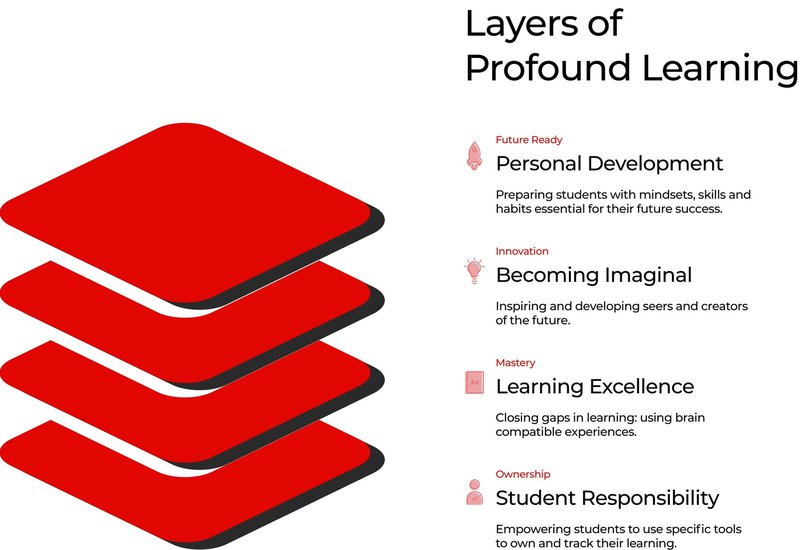
Bring out the Cake!
Our learning model is called Profound Learning, which can be modelled as a four-layer cake.
Profound Learning is based on student ownership and empowerment, which LearningCITY calls “Purpose-Based Learning”.
Now as I run through these 4 parts of the cake, I want you to keep in mind what LearningCITY is all about: building the capacity to adapt to change and complexity through an ecosystem of learning.
The four layers of the Profound Learning model are:
- Ownership
- Mastery
- Innovation
- Future Ready
The bottom two layers of the cake give children the tools to become life-long learners. Ownership happens through a shift in teacher and student roles where students learn to take responsibility for their learning. Mastery is the process of students tracking, identifying and closing their learning gaps to ensure excellence.
Additionally, students are taught the Seven Habits of the Master Learner, which are as follows:
- Person of Character
- Quality Producer
- Lifelong Learner
- Collaborative Worker
- Independent Worker
- Critical and Creative Thinker
- Principle-Centred Leader
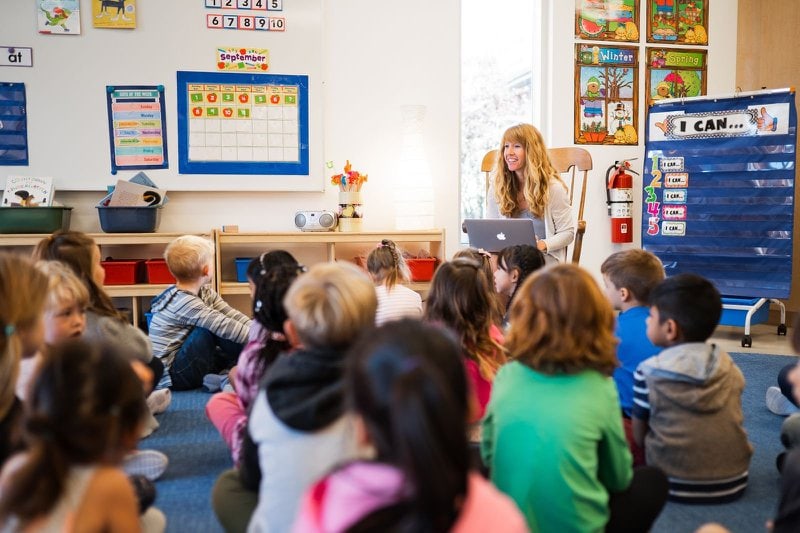
Therefore, when students graduate from the Academy, they have the tools and know-how to be life-long learners. As well, the Seven Habits have prepared them for the next two layers of Profound Learning: Innovation and Creativity, and Becoming Imaginal which means cultivating their unique God-given talents and personal vision.
Profound Learning is an Integrated K-12 Model of Education
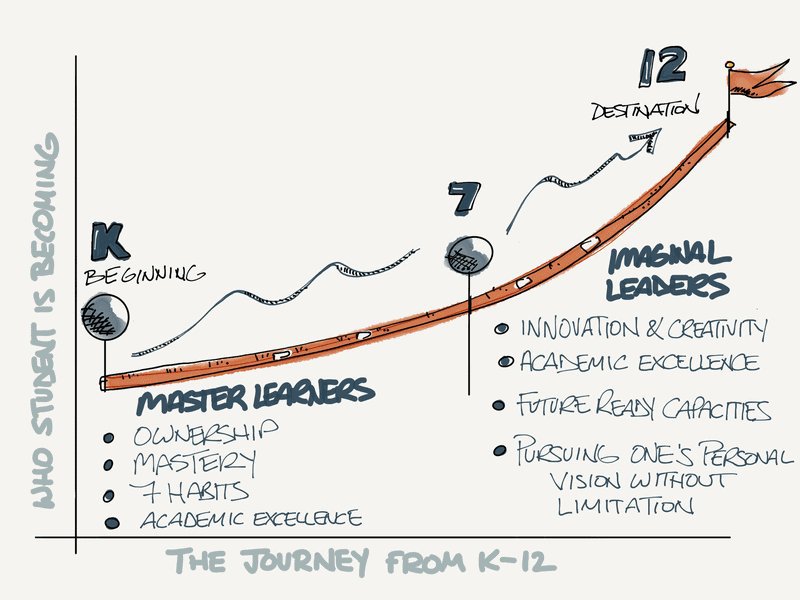
The focus of Master’s College (grades 7-12) is two-fold:
- Academic excellence
- Becoming an Imaginal Leader through innovation, creativity, collaboration, and Christian integration
The Innovation layer of Profound Learning is punctuated with a required course for innovation, creativity, and collaboration called the Imaginal Program.
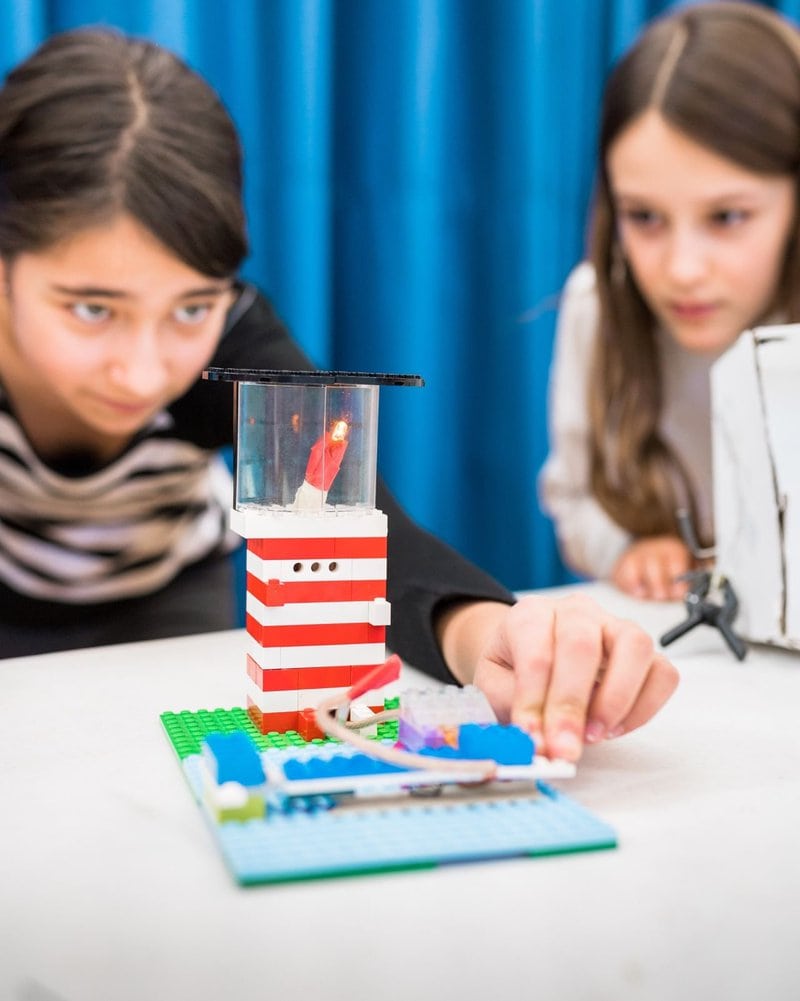
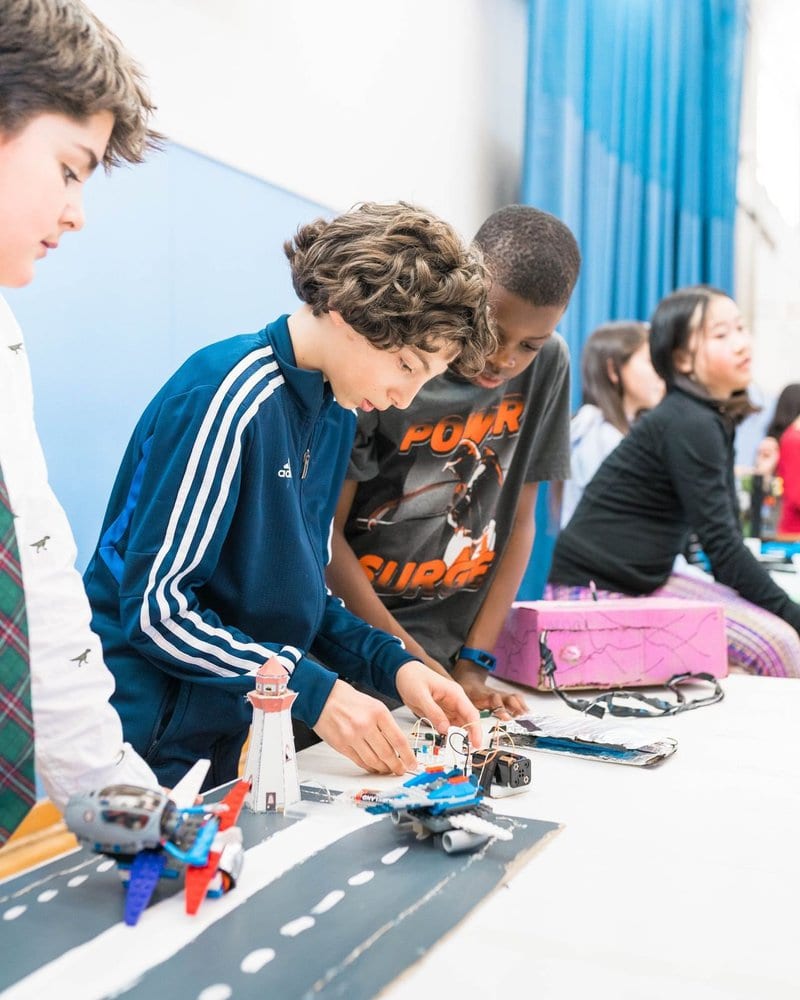
Did you get that?
A required course on innovation and creativity for grades 7-12!
An Imaginal Leader is one who sees, learns from, and creates the future. At Master’s our students are not only taught information about the past, but they are also taught to learn from the future.
Imaginal Leadership at Master’s
At Master’s the Imaginal Leadership Program is a direct response to the change and complexity of our world that requires lifelong learning and adaptability. Sure there are schools that teach STEM—and that’s well and good, and we do that too. But what is often lacking is the ‘how’ of innovation and creativity. How do you do it? There is not an easy answer to this question that has even confounded the largest companies.
We don’t just teach tools of innovation, we teach processes of innovation. Thus if a student understands how to innovate, how to create, then they will be able to adapt to the rise of different kinds of tools.
As Andreas Schleicher, of the Organization for Economic Development and Opportunity, states, “The modern global economy doesn’t pay you for what you know, because the internet knows everything. The world economy pays you for what you can do with what you know.”
One of the movements of the LearningCITY is the transition to an open-learning system. In Profound Learning, we call this ‘shifting roles’, when the role of the teacher and the role of the student shifts thus leading to ownership and empowerment.
We don’t just teach tools of innovation, we teach processes of innovation.
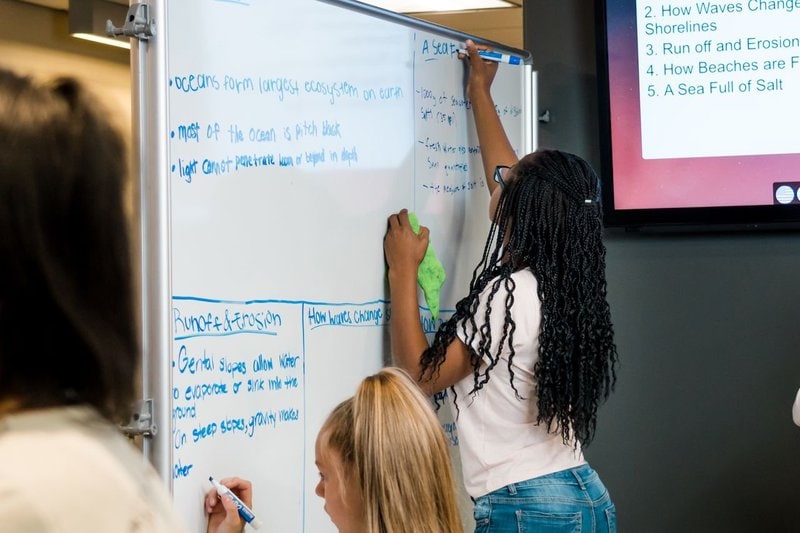
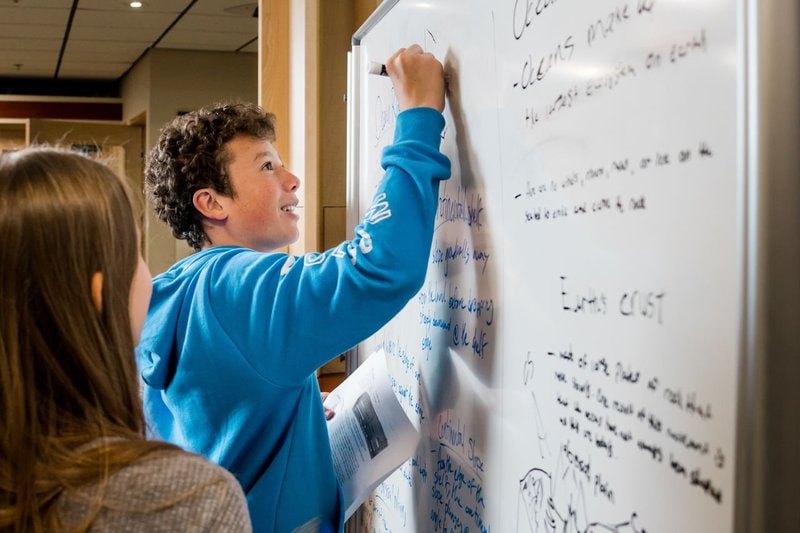
The ability to see, learn from, and create the future is activated by personal vision as students become Future Ready.
Being future ready is the culmination of our program: it is the integration of taking ownership of one’s learning, mastering how one learns, and being able to employ innovation, creativity, and collaboration towards specific goals.
But the Future Ready part of our model is more than the mere sum of those parts—it is about who the student is becoming, it is about personal passion and vision, and what Carol Dweck calls ‘growth mindset’.
Finding Your Big WHY …
At Master’s, personal passion is elevated to what we call ‘The Big WHY’.
As Tom Rudmik, the Founder and CEO of Master’s and author of the book “Becoming Imaginal: Seeing and Creating the Future of Education”, explains,
“The Big WHY is an emergent property that takes into account your identity, passions and gifts, your purpose for life, the cause you feel connected with, and the dream you have for advancing that cause. Your ‘Big WHY’ is a unique calling to make a difference in your world that grows over time. It is a spiritual connection that creates a sense of destiny for your life. Using a farming metaphor, having a ‘growth mindset’ towards developing passion areas creates the soil conditions into which the seed or Big WHY is planted.”
The Big WHY relates to the foundation of our vision—our Christian faith. We believe each of us is created in the image and likeness of God. As such, our ability to envision and create and collaborate with others comes from our identity as His creation. God made human beings to be creative, and contribute positively to the common good of humanity. Most importantly, human are created to offer this creative freedom out of faith, hope, and love. In a world of chaos, massive change, and unpredictability, can you think of any better orientation than to create out of love?
Christian Integration: Creating Through Faith, Hope, and Love
Moreover, history is full of accounts of Christians who made significant culture-altering discoveries and contributions. Christians have made many breakthroughs in technology, education, government, science, economics, literature, philosophy, and art. Christians contributed to such breakthroughs because there was something at their centre, at their core, that called them to do what they did: the Love of God through Jesus Christ.
We believe our students can do the same. We believe our students can create and contribute to the good of humanity through faith, hope, and love.
One last movement of the LearningCITY plan is the ecosystem …
At Master’s, we’ve been working hard at building an ecosystem for transforming education around the world.
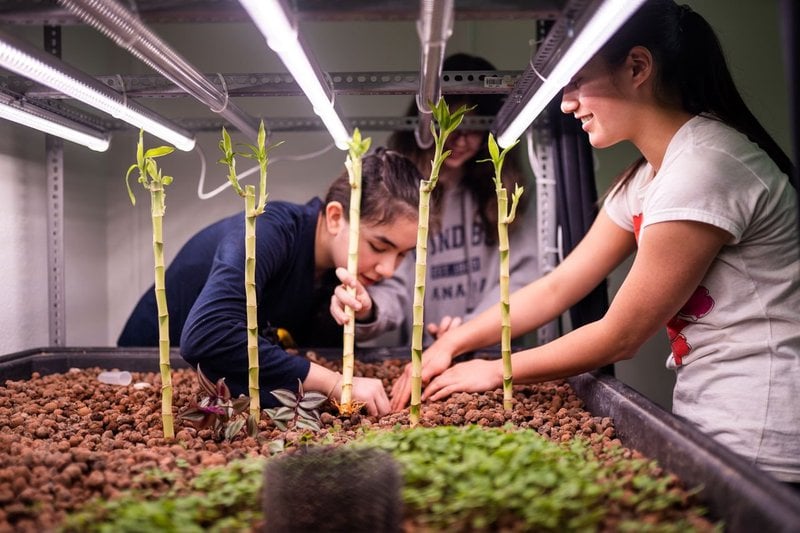
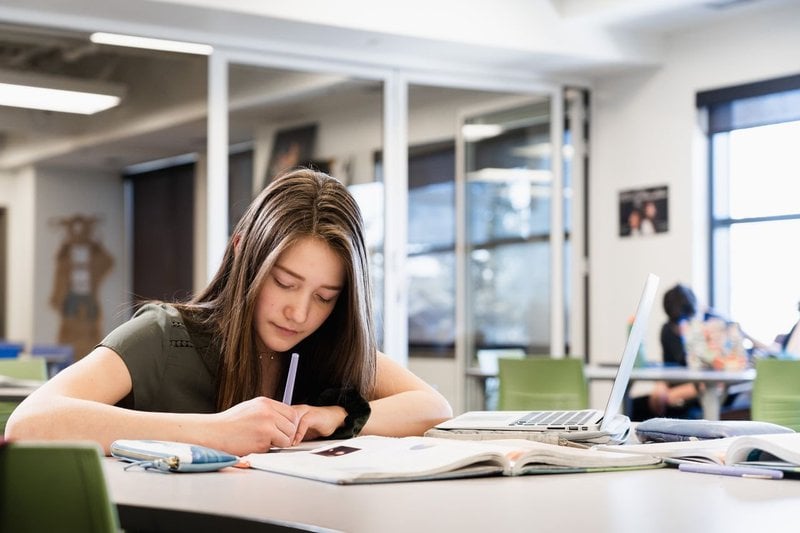
Master’s: a Global Hub for Education Transformation in the City of Calgary
The Calgary Economic Development Report and the LearningCITY Project both state that the current model of education is broken.
We at Master’s agree.
But…
We’re not just here to talk about it, to hold TED Talks about it, to simply state the obvious.
No.
We’re here to change it.
It’s been our vision for over 20 years. Remember what I stated above about Master’s mission?
It came out of a dream: To create a breakthrough model of education and share it with the world.
It is in the spirit of sharing with the world that we have created an ecosystem—just as the LearningCITY Project has called for.
Only our ecosystem is not just for the city of Calgary, it’s not just regional…
Our ecosystem is GLOBAL.
It is called Imaginal Education.
Imaginal Education
To that end, we have developed an entire software system called Geenius. And we are building prototype schools in different parts of the world with our global partners.
We have collaborated with governments, education leaders, and industry leaders not only on education initiatives, but also in transforming businesses and nations.
Innovation crosses all boundaries and cities, countries and curriculum—when you know how to innovate in one context, you can adapt it to another.
In fact, most of what is taught through our Imaginal Leadership Program has been used to consult a multi-national agribusiness in Brazil and help launch a think tank in Africa, to give just two examples.
The LearningCITY concept is right (though its approach is more of an injunction than an invitation): we need to build ecosystems of transformation. And Master’s, along with its sister organization Imaginal Education, is doing just that.
But it doesn’t end there.
We are the Crazy Ones
For while we’re working on transforming education in other parts of the world, we’re transferring all we’re learning and all the work we’re doing back to our students so that they can become the crazy ones—
Yes, the innovators, inventors, disruptors, and change agents …
The Imaginal Leaders who not only adapt to the future, but create it as well.
At Master’s we are creating a learning organization that is truly adaptable, innovative, and, within a global context, truly transformative.
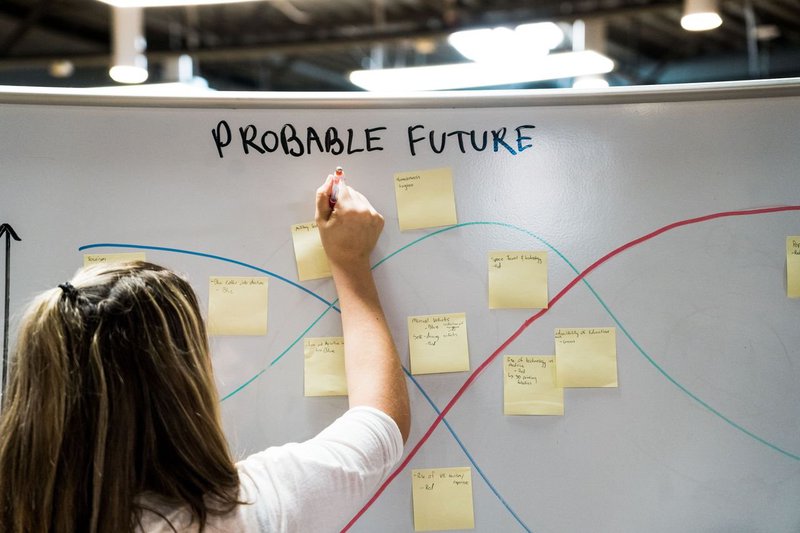
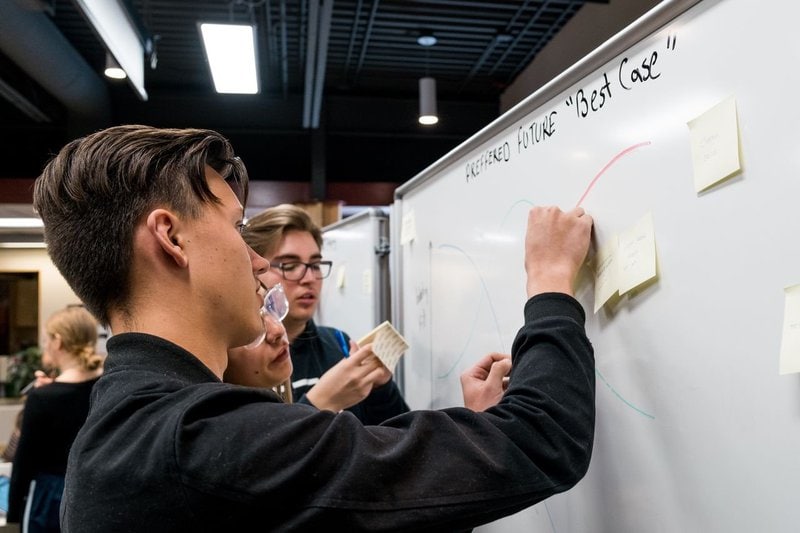
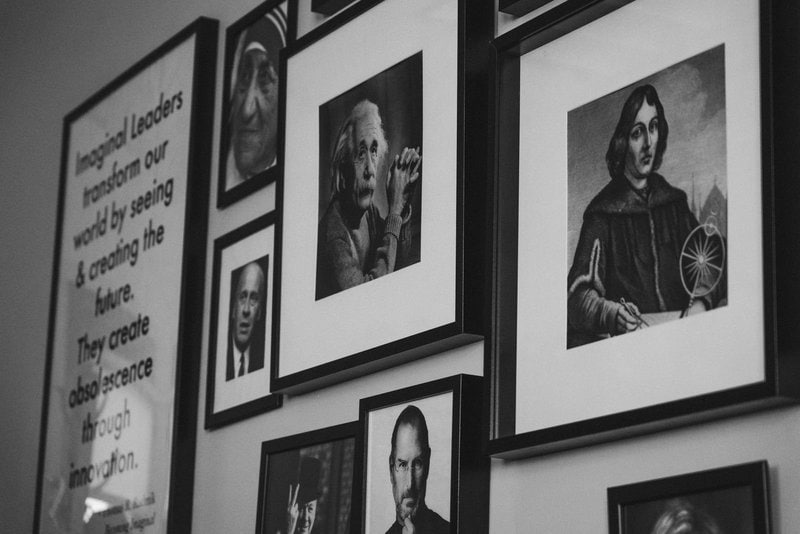
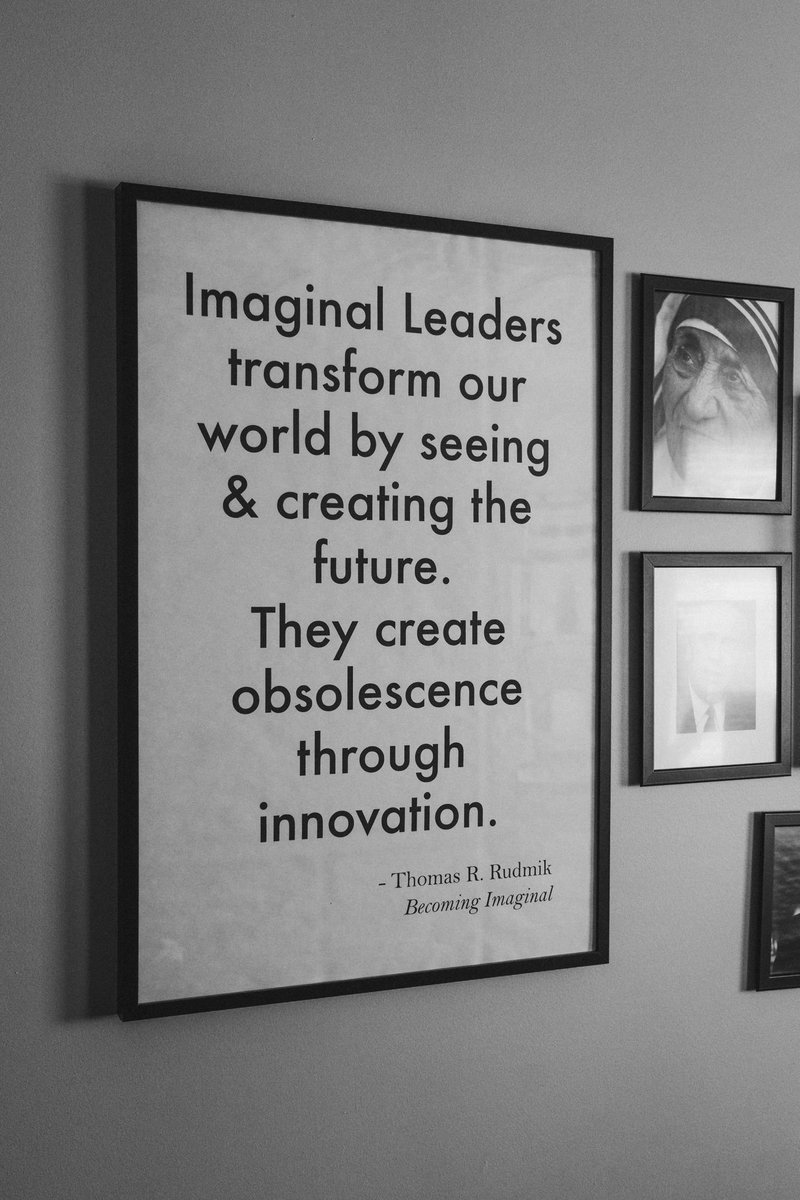
Interested in what you’ve read? Have a question? Drop me a comment below and I will respond. It’s always a joy to hear from our readers.
